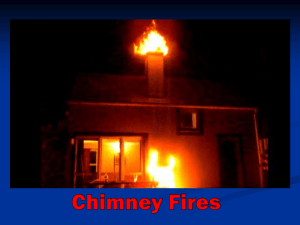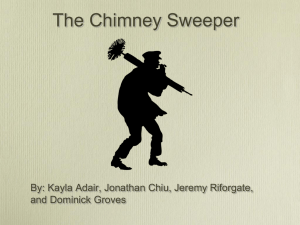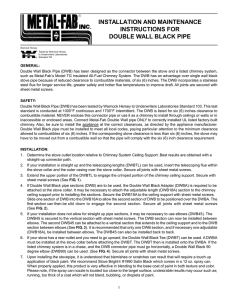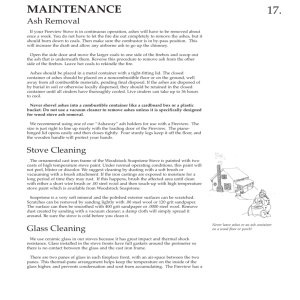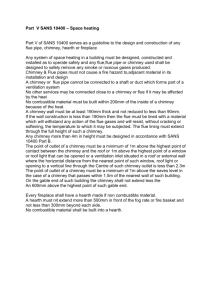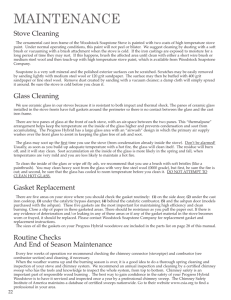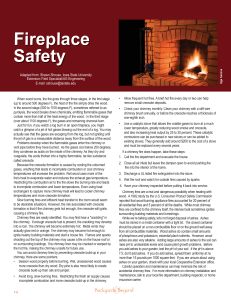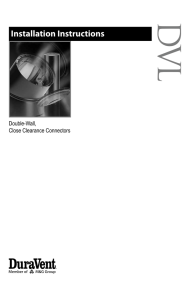Installation instructions for Single Wall Black Pipe
advertisement
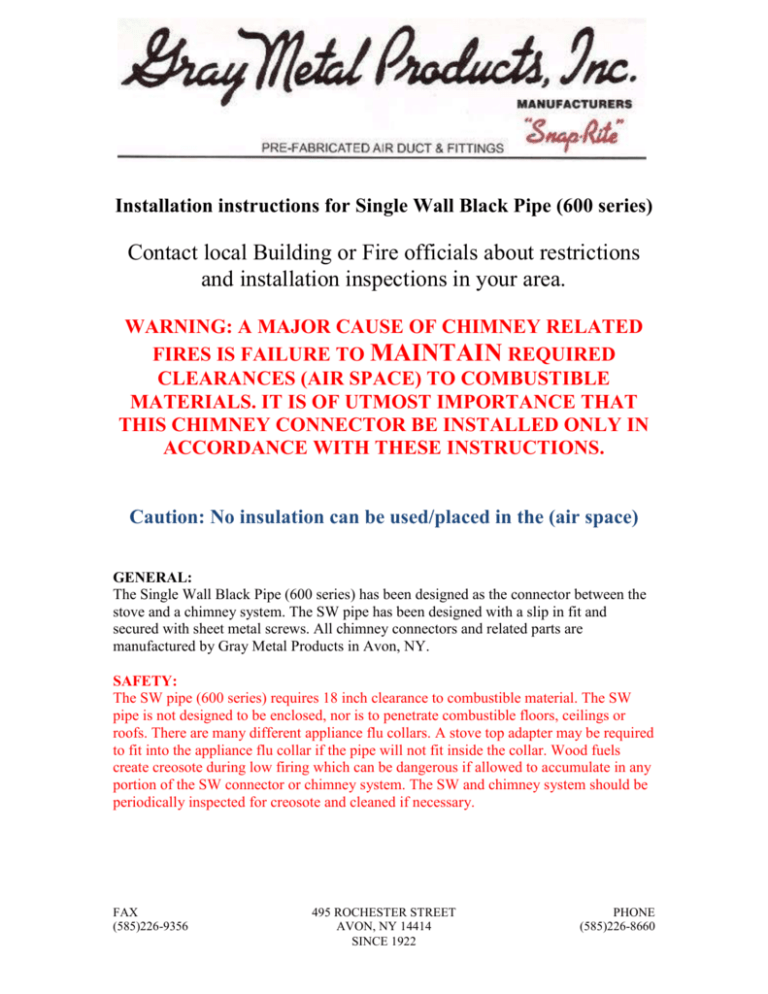
Installation instructions for Single Wall Black Pipe (600 series) Contact local Building or Fire officials about restrictions and installation inspections in your area. WARNING: A MAJOR CAUSE OF CHIMNEY RELATED FIRES IS FAILURE TO MAINTAIN REQUIRED CLEARANCES (AIR SPACE) TO COMBUSTIBLE MATERIALS. IT IS OF UTMOST IMPORTANCE THAT THIS CHIMNEY CONNECTOR BE INSTALLED ONLY IN ACCORDANCE WITH THESE INSTRUCTIONS. Caution: No insulation can be used/placed in the (air space) GENERAL: The Single Wall Black Pipe (600 series) has been designed as the connector between the stove and a chimney system. The SW pipe has been designed with a slip in fit and secured with sheet metal screws. All chimney connectors and related parts are manufactured by Gray Metal Products in Avon, NY. SAFETY: The SW pipe (600 series) requires 18 inch clearance to combustible material. The SW pipe is not designed to be enclosed, nor is to penetrate combustible floors, ceilings or roofs. There are many different appliance flu collars. A stove top adapter may be required to fit into the appliance flu collar if the pipe will not fit inside the collar. Wood fuels create creosote during low firing which can be dangerous if allowed to accumulate in any portion of the SW connector or chimney system. The SW and chimney system should be periodically inspected for creosote and cleaned if necessary. FAX (585)226-9356 495 ROCHESTER STREET AVON, NY 14414 SINCE 1922 PHONE (585)226-8660 INSTALLATION: 1. Determine the appliance outlet location relative to the chimney system ceiling support or existing masonry chimney. If the appliance is being terminated into an existing masonry chimney, a trim collar (605) is used to close the gap between the brick and SW connector. (see FIG. 1) 2. If your installation is using a slip connector, the connector is attached to the ceiling support flue and secured with sheet metal screws (FIG 2). 3. Install the stove top adapter on the appliance collar with the crimp end into the appliance collar (if needed). Secure with sheet metal screws. (FIG.2). 4. If more than 2 sections are used in your installation, install SW sections starting at the single wall adapter until only 2 sections are left to be installed. Install one SW section over the single wall slip connector and adjust upward. Install the final SW section. Slide the upper most SW section downward to complete the connection. Secure each joint with sheet metal screws. (FIG 2) 5. If elbows are required, only one pipe section is recommended between elbows (FIG. 3). The elbows are secured to the pipe section with sheet metal screws. NOTE: The 90 degree SW elbow is normally used to vent a top opening stove into and existing masonry chimney. 6. For rear outlet stoves, a single (SW) tee is used to direct the exhaust upward. A single wall adapter is required between the stove outlet and the Tee. (FIG 4) 7. For normal room heights, telescoping sections can be used between the stove outlet and the ceiling support. Slide the top section into the bottom section; adjust pipe section a couple inches smaller than the measured gap big filled. Place the bottom section into the stove adapter (if needed). Extend the telescoping pipe top section into the mating pipe section and secure with sheet metal screws. (FIG 5) 8. If the stove outlet is a smaller diameter than the ceiling support, a single wall increaser (612) can be used. The increaser normally secures to the ceiling support. 9. Upon installing the stovepipe, it is understood that blemishes or scratches can result that will require a touch up application of black paint. We recommend a Satin Black High Heat spray paint. If applied per manufactures instructions this can be very effective. Do not spray to close to target surface – running, bubbling or droplet can occur. FAX (585)226-9356 495 ROCHESTER STREET AVON, NY 14414 SINCE 1922 PHONE (585)226-8660 Maintenance instructions for Single Wall Black Pipe (SW) MAINTENANCE: When wood is burned slowly, it produces tar and other organic vapors, which combined with expelled moisture to form creosote. The creosote vapors condense in the relatively cool chimney flue of a slow burning fire. As a result, creosote residue accumulates on the flu lining. When ignited this creosote makes an extremely hot fire. The single wall pipe and the chimney system should be inspected at least once every 2 months during the heating season to determine if a creosote or soot build up has occurred. If creosote or soot has accumulated, it should be removed to reduce the risk of chimney fire. If it is determined you need to remove creosote or soot contact a licensed chimney cleaning company. Contact local Building or Fire official about restrictions and installation inspections in your area. FAX (585)226-9356 495 ROCHESTER STREET AVON, NY 14414 SINCE 1922 PHONE (585)226-8660
